The Danube River, a muse for countless artists, once served as a boundary between Buda and Pest, two significant towns that merged into a single city in 1873. Today, this city stands as one of Europe’s most influential capitals. Majestic iron bridges connect the two banks, with Buda, the former Royal district and upscale residential area on one side, and Pest, the city’s commercial and financial hub, on the other.
Take a stroll through the city’s historic lanes, and you’ll understand why Budapest is known as the ‘Pearl of the Danube’ and why it attracts over 7 million visitors annually. The Hungarian capital is sure to captivate you.
Claudio Magris, the Polish writer and recipient of the Prince of Asturias Award, christened Budapest as the ‘Pearl of the Danube’ after his European travels.
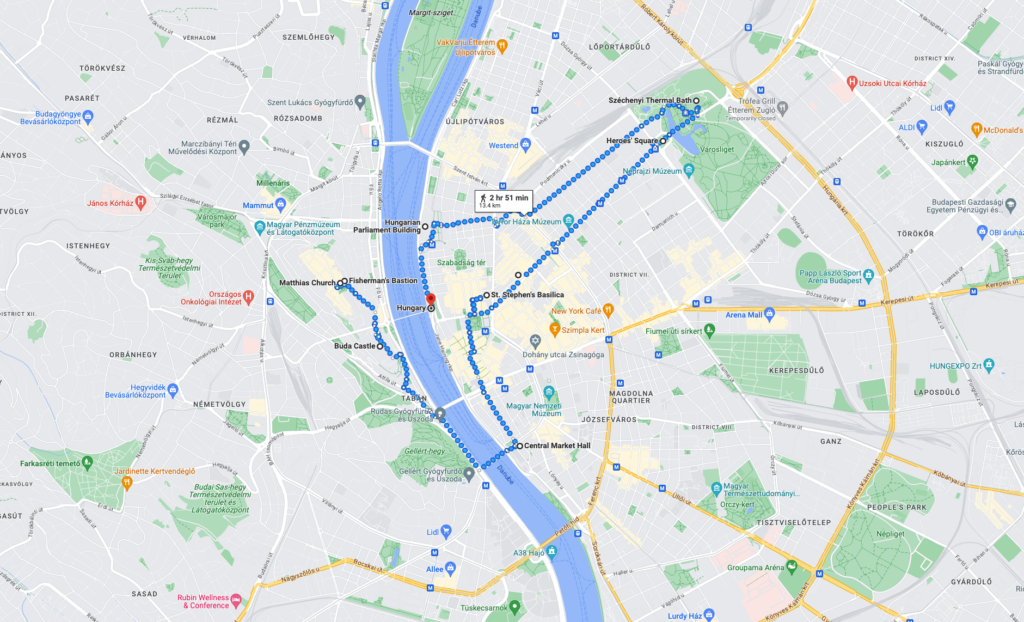
Table of Contents
Must Visit Places in Budapest
Here are my picks for the must visit places in Budapest, my opinion is based on Google reviews and personal experience.
1. The Fisherman’s Bastion
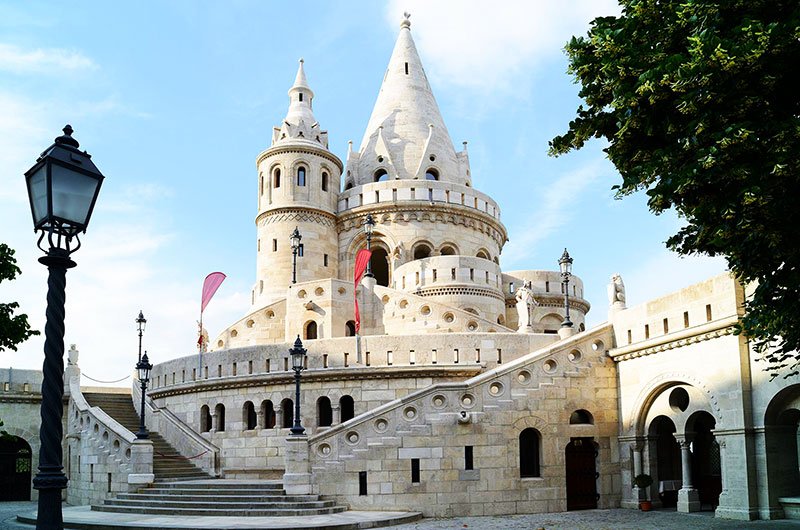
The Fisherman’s Bastion, originally built as a part of the defensive wall of Buda Castle, owes its name to the local fishing community that was responsible for defending this section of the city. The restoration of this historic structure began in 1899, under the supervision of architect Frigyes Schulek. Despite numerous archaeological discoveries at the site, including Gothic and Renaissance tombstones and the sanctuary of a former Dominican church, the Bastion was opened to the public on October 9, 1905.
The design of the Bastion, as envisioned by Schulek, includes a three-tiered staircase, northern and southern bastions, corridors, and a southern bastion yard. The northern tower, formerly known as the Telegraph Bastion, was incorporated into the design, while the southern tower was built by Schulek himself.
The courtyard of the Bastion is home to an equestrian statue of Saint Stephen, the first King of Hungary. This statue, crafted by Alajos Strobl, stands on a foundation adorned with reliefs that commemorate significant events from King Stephen’s reign, including his coronation. The stone towers of the Bastion symbolise the seven tribal leaders who led the Magyars to settle in present-day Hungary.
After World War II, the Fisherman’s Bastion required another round of restoration. This time, the work was overseen by János Schulek, the son of Frigyes Schulek. The restoration was completed in 2003, many years later. Over time, the Bastion has become one of Budapest’s most visited tourist attractions and a favoured location for filming, featuring in music videos by globally renowned artists like Ellie Goulding and Selena Gomez.
Just a short walk from the Fisherman’s Bastion is Matthias Church, another historic site that served as a coronation venue. A climb of 197 steps will take you to the wreath-shaped balcony of the church tower, offering a breathtaking view of the city.
2. Matthias Church
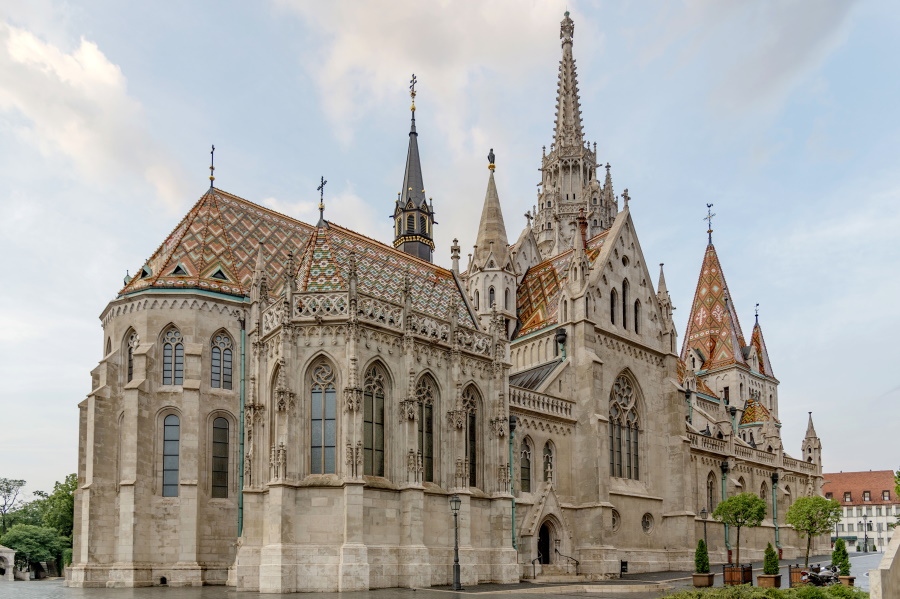
Matthias Church, or Matyas-templom as it’s known in Hungarian, is a Roman Catholic church nestled in the heart of Buda’s Castle District in Budapest, Hungary. Positioned right opposite the Fisherman’s Bastion, this church is steeped in history. Church tradition suggests that the original structure was built in the Romanesque style in 1015.
The present edifice, however, was built in the ornate late Gothic style during the latter half of the 14th century, and underwent extensive restoration towards the end of the 19th century. In its time, it was the second-largest church in medieval Buda and the seventh largest in the medieval Kingdom of Hungary.
3. Buda Castle
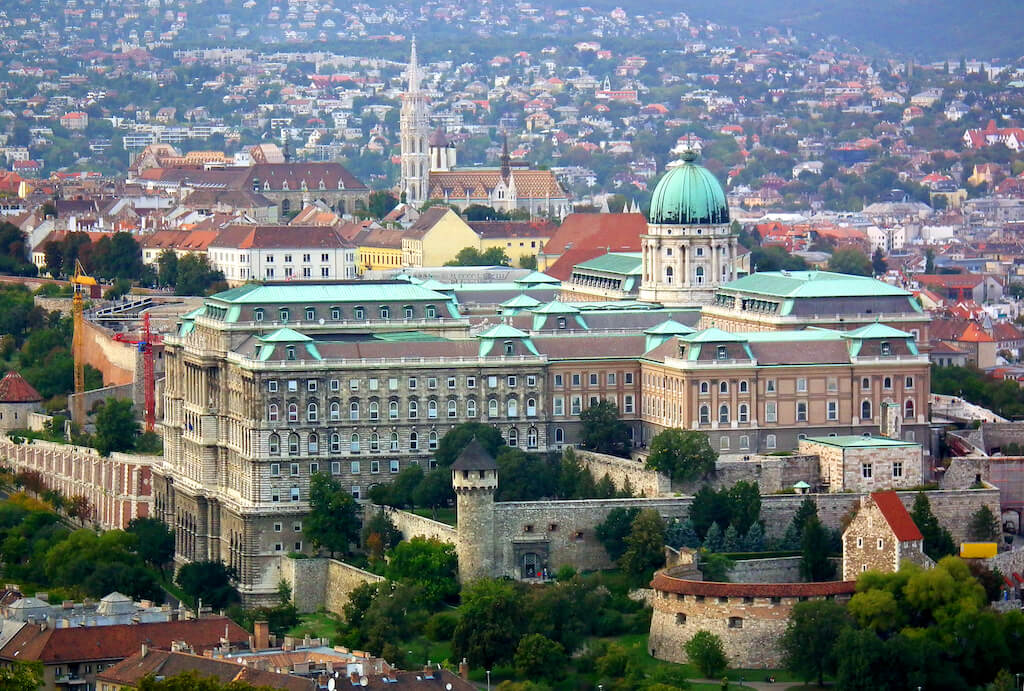
Situated on Castle Hill and overlooking the Danube River, Buda Castle is a vast castle and palace complex that harks back to the 18th century. This site is home to a wealth of art and history museums, expansive courtyards, churches and chapels, eateries, and renowned landmarks like the Fisherman’s Bastion, celebrated for its enchanting exteriors. You can discover all these and more on a guided tour—there’s even an after-dark tour that unveils the mysterious side of Buda Castle.
To reach the castle, you can embark on a walk up the hill from the famous Chain Bridge. Alternatively, you can opt for a ride on the funicular, but be prepared for a queue—so it’s best to arrive early.
4. Museum of Fine Arts
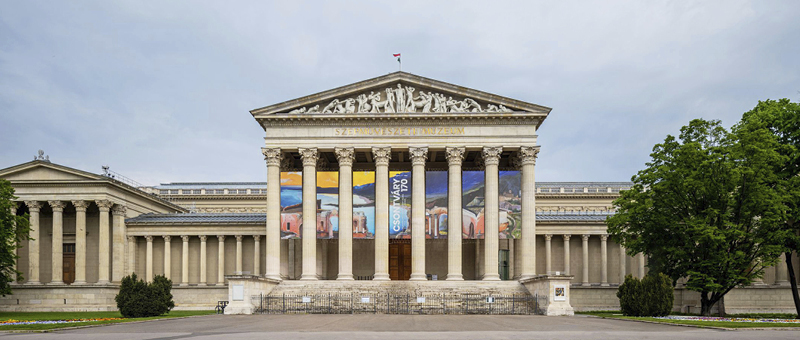
The Szépmuvészeti Múzeum, also known as the Museum of Fine Arts, is not only Budapest’s leading art gallery, but it also boasts one of the most comprehensive collections of Old Masters’ works in Europe.
This grand collection of Italian, Spanish, and Dutch masterpieces is displayed in a splendid 19th-century edifice, which draws inspiration from classical architecture. The building is designed with elongated galleries to accommodate larger artworks, intimate cabinets for smaller and more personal pieces, and architecturally fascinating areas like the Renaissance Hall.
The museum’s inception dates back to 1870 when Hungary came into possession of an extraordinary collection of paintings, sketches, and prints. Today, it is segmented into six exceptional departments: Egyptian Art, Ancient Art, the Old Sculpture Gallery, the Old Painter Gallery, the Modern Collection, and the Graphics Collection.
Situated next to the Museum of Fine Arts is the Palace of Art, the city’s premier modern art museum that regularly hosts a variety of temporary exhibits. It’s worth taking the time to explore the current displays. (Note: This should not be mistaken for the Palace of Arts, a cutting-edge cultural hub that is home to the Ludwig Museum, a modern art collection showcasing works by Picasso, David Hockney, and numerous Hungarian Masters.)
5. The Central Market Hall
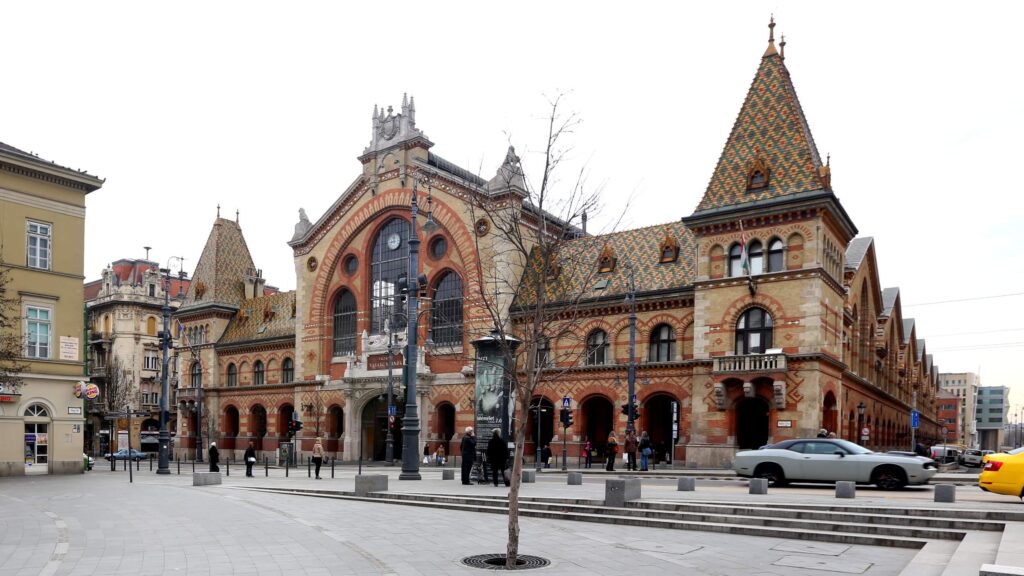
The Great Market Hall, also known as the Central Market Hall, holds the distinction of being the largest and oldest among the five indoor markets established in Budapest.
Towards the end of the nineteenth century, indoor markets were introduced in Hungary’s capital to ensure the quality of food and enhance its preservation, as the residents of Budapest were grappling with foodborne illnesses.
The Central Market Hall was commissioned by the city’s mayor. Hungarian architect Samu Pecz was tasked with designing the expansive market, and the structure was completed in 1897. From its inception, the market faced criticism from the citizens of Budapest. They were upset because the general prices had risen since the inauguration of the indoor market. The prices gradually increased, reaching their peak during World War I.
During World War II, the market was completely destroyed and in the subsequent years, it was gradually abandoned.
In 1991, the Market went bankrupt and was closed for a couple of years. Three years later, the building was restored, and today, it is one of the most visited attractions in Budapest.
The market is open every day except Sunday, although the best day to visit the market is on Saturday when it is bustling with people purchasing all kinds of food and souvenirs.
If you feel hungry during your visit to the Great Market Hall, there are inexpensive food stands on the top floor where you can share tables with locals and other tourists.
6. St. Stephen’s Basilica
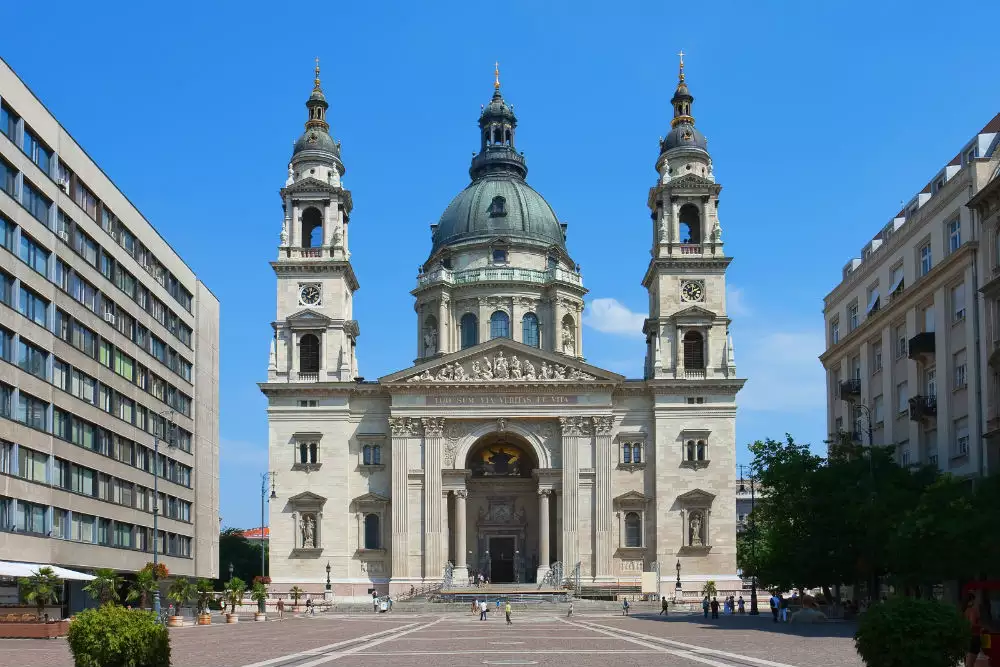
Szent István-bazilika, or St. Stephen’s Basilica as it’s known in English, is a much-loved landmark in Budapest, celebrated for its breathtaking architecture, the splendour of its interior, and the sweeping views from its dome. The basilica is named after St. Stephen, the revered king of Hungary and the founder of the Hungarian state. The construction of this magnificent structure commenced in 1851, but due to various obstacles—including the collapse of its yet-to-be-completed dome—it wasn’t consecrated until 1905.
During World War II, the basilica’s roof, towers, and external walls sustained considerable damage, and the church’s valuable mosaics were dislodged from the walls. However, these were meticulously restored to their original positions and now form the centrepiece of the lavishly adorned interior. The most striking among these is the five-part Venetian mosaic in the sanctuary, which depicts the allegories of the mass.
The basilica’s most cherished sacred relic, the mummified right hand of the church’s patron saint and Hungary’s first king, is displayed under glass in the chapel to the left of the high altar.
If time permits, one of the top activities here is to take one of the two lifts that carry visitors up to the cupola for expansive 360-degree views over the city and the Danube (or, if you’re feeling energetic, you can ascend the 364 steps). Guided tours of the basilica are offered on weekdays. Also, make sure to visit the cathedral’s website for information on its regular organ and classical music concerts.
7. The Hungarian State Opera
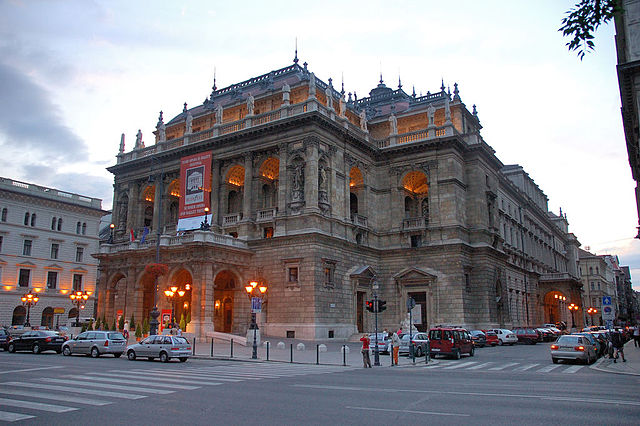
The Hungarian State Opera House (Magyar Állami Operaház) is as awe-inspiring inside as it is from the outside, making it a must-visit destination in Budapest. The sheer scale of the building is impressive, and since its inauguration in 1884, it has held a prominent place in the city’s cultural events calendar.
The building’s lavish interior is as captivating as its many performances. Adorned with exquisite artwork and sculptures from Hungary’s most esteemed artists, the Opera House can accommodate up to 1,300 spectators in its horseshoe-shaped auditorium, renowned for its excellent acoustics.
The Hungarian State Opera House serves as the home for the Budapest Philharmonic Orchestra and the Hungarian National Ballet. Attending a performance here would undoubtedly be a highlight of your Budapest travel itinerary. The orchestra’s season typically spans from September to June, and tickets can be procured online. Daily guided tours in English are also on offer.
8. The impressive Heroes’ Square (Hosök tere)
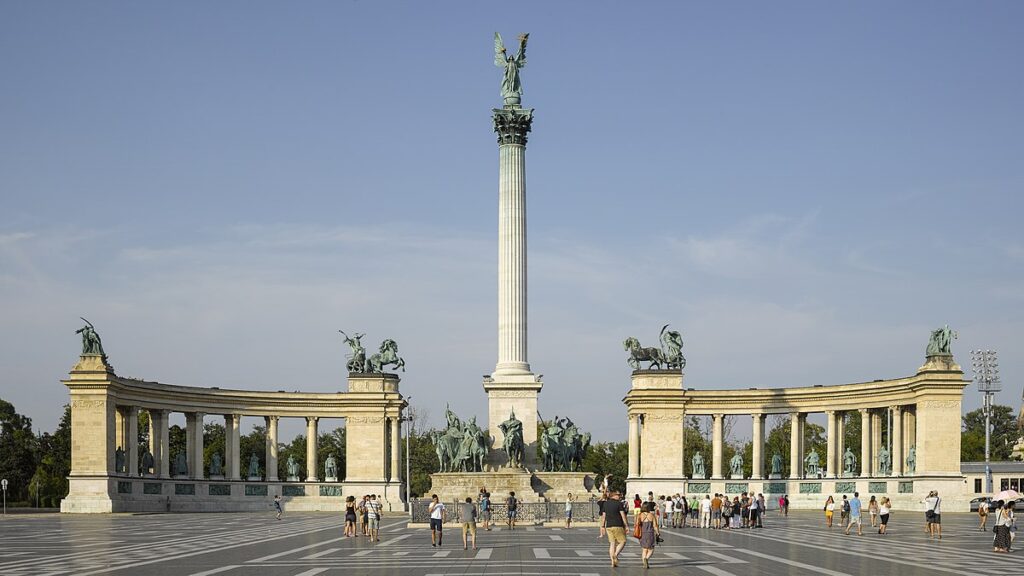
The impressive Heroes’ Square (Hosök tere) was largely the work of architect Albert Schickedanz, who was also responsible for the huge Museum of Fine Arts that flanks this large open space.
Highlights include the Millennium Monument, a 36-meter column crowned by a figure of the Archangel Gabriel and unveiled in the late 19th century. Around the plinth can be seen a group of bronze horsemen representing the conquering Magyar Prince Árpád and six of his fellow warriors.
On either side of the column, colonnades extend in a semi-circle, and between the individual pillars stand statues of Hungarian rulers. Above the corner pillars are beautiful works in bronze by Zala.
In front of the Millennium Monument stands a memorial to the Unknown Soldier. It’s an especially nice place to visit at night when illuminated.
9. Széchenyi Thermal Bath
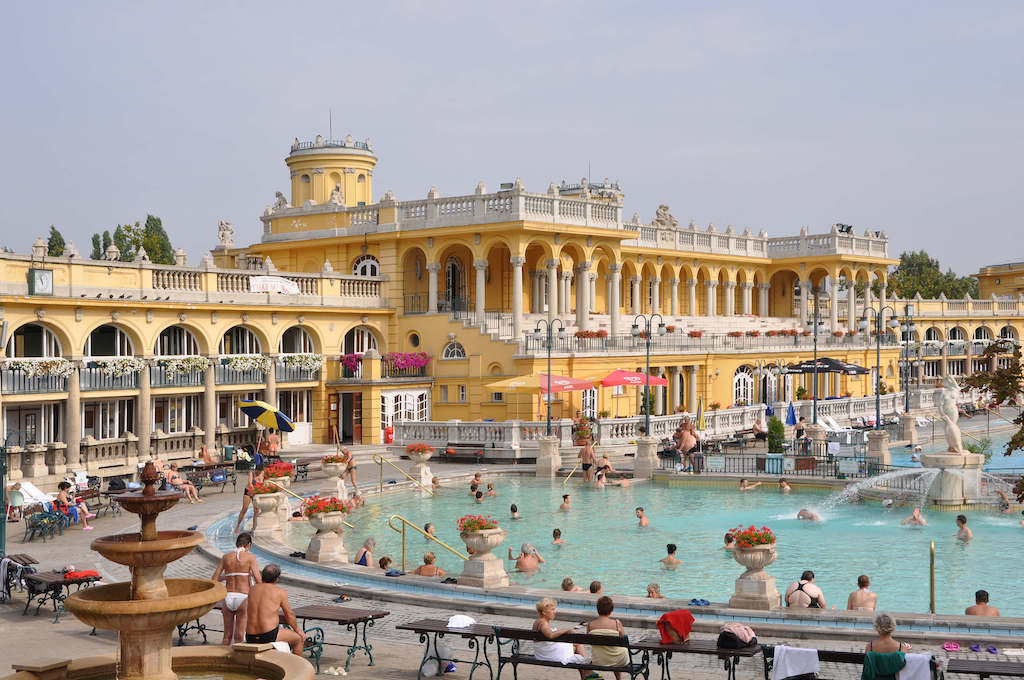
Budapest is well-known worldwide for its incredible thermal springs, many of which have been harnessed to provide citizens, as well as visiting tourists, the opportunity to relax and rejuvenate in thermal baths.
Of the many such attractions Budapest, the best known is Széchenyi Thermal Bath (Széchenyi gyógyfürdo). Established in 1913, it’s supplied by two thermal springs; it’s also the biggest such facility in Europe, capable of handling thousands of bathers at a time in its three outdoor pools (including an adventure pool that’s great for families) and 15 indoor pools.
In addition to its pools, guests can enjoy its saunas and steam rooms, as well as spa services including massages. For a special treat, pay a visit to the baths after nightfall. Day tickets, which include use of a locker, can be purchased online, or upon arrival. If you have decided to visit this great place please do not forget to bring your bathing suits.
10. Hungarian House of Parliament
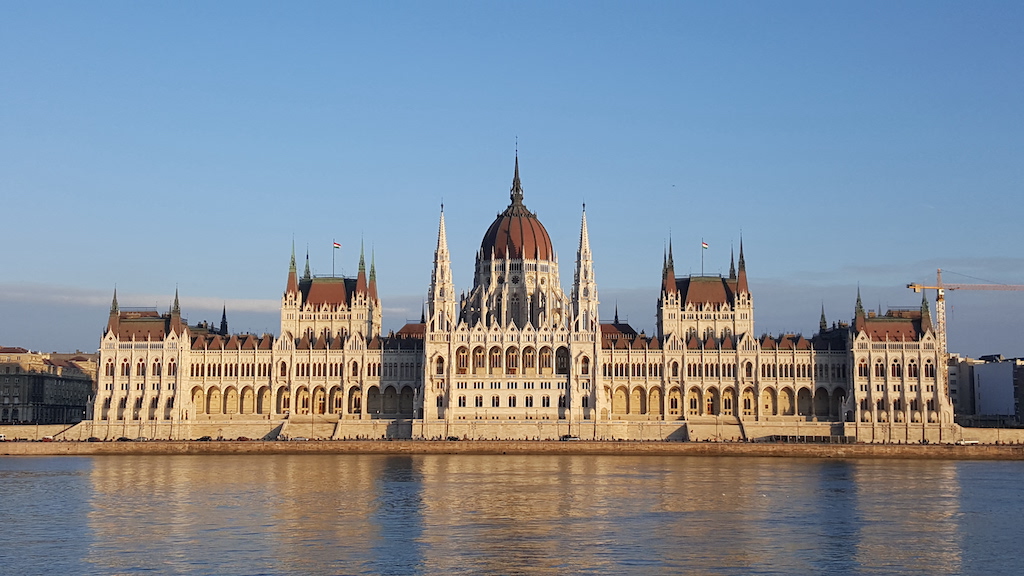
Let’s delve into some key facts about the Hungarian House of Parliament, without getting too lost in its history.
Firstly, it’s important to clarify that the term “parliament” technically refers to the body that convenes in the House of Parliament. While many refer to this magnificent building as the Parliament, its correct name is the House of Parliament. The construction of this remarkable edifice spanned 17 years, from 1885 to 1902, following the design of architect Imre Steindl. Regrettably, Steindl passed away five weeks before the inauguration and did not witness the completion of his masterpiece.
A crucial requirement for the construction project was the exclusive use of Hungarian raw materials and the involvement of Hungarian craftsmen and manufacturers, right down to the native Carpathian Basin flora used for decoration. This condition was met, with the exception of the colossal granite columns imported from abroad. (An interesting fact: only 12 of these columns have ever been created worldwide – eight are in the House of Parliament, while the other four are in Britain.) Some statistics are truly astounding: approximately 40 million bricks were used in the construction, and about 40 kilograms of 22-23 carat gold adorn the Parliament. The building’s floor area spans 18,000 square metres; 90 stone statues embellish the facade, and around 162 additional figures are found inside. The red carpet inside stretches almost 3 km; there are 27 gates to enter, and 365 towers of varying sizes, one for each day of the year, rise from the Hungarian Parliament.
In terms of style and size, the House of Parliament’s floor plan is Baroque, the facade is Gothic-inspired, and the ceiling exhibits Renaissance traits. The wing parallel to the Danube measures 268 metres in length, and the building extends 123 metres at its widest point. The cupola’s tower stands 96 metres tall. Every section of the House of Parliament was constructed based on a detailed plan, so the design of the building is far from accidental: each part conveys significant political and historical messages. The prominent cupola in the middle symbolises legislative unity and was also the location for joint sittings of the lower and upper houses, as the Hungarian National Assembly was originally a bicameral system. The lower and upper house chambers on either side of the cupola, identical in design, symbolically represent the equal rights of the two houses.
11. The Chain Bridge
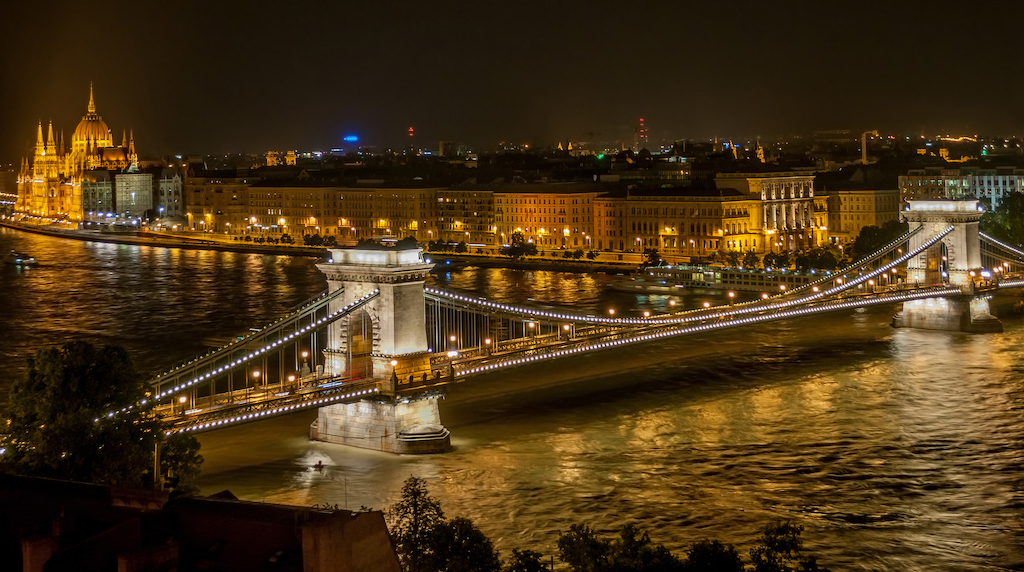
The Chain Bridge in Budapest is undeniably the city’s most iconic landmark, gracing countless postcards and often compared to Prague’s Charles Bridge. However, there are notable differences between the two. While the Charles Bridge was built in the 14th century, the completion of the Chain Bridge came much later, in 1849, over 500 years after its Prague counterpart.
Prior to the construction of the Chain Bridge, pontoon bridges were used to cross the Danube. However, during the winter months when the river froze, the boats were removed, and people resorted to walking across the icy surface. This presented a challenge as the Danube would occasionally thaw, leaving individuals stranded on the “wrong” side of the river, causing inconvenience, especially when important matters awaited them on the opposite bank.
The initiative to build the Chain Bridge was taken by Istvan Széchenyi, a wealthy man who grew frustrated with the lack of convenience in crossing the river. On a particular occasion, he urgently wanted to visit his ailing father but was unable to reach him due to the frozen Danube, and no one dared to transport him across. Driven by this experience, Széchenyi not only spearheaded the construction of the Chain Bridge but also generously donated substantial funds towards its realization. Once completed, the bridge imposed a toll on anyone crossing, a measure that met with considerable opposition. In fact, it was reported that some individuals would rather embark on a multi-day journey to cross the river elsewhere than pay the toll to use the bridge.
12. Ferris Wheel of Budapest
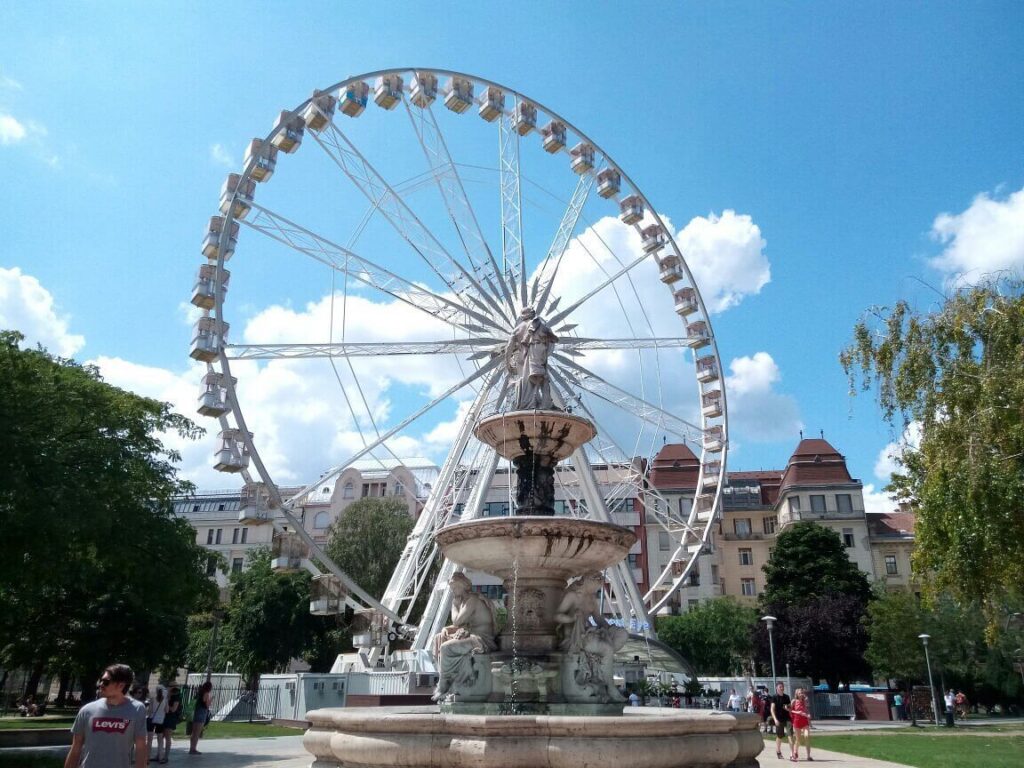
To see the panoramic views of the Budapest city, don’t miss a ride on the Budapest Ferris Wheel located in Erzsébet Square. Soaring to a height of 65 meters, this Ferris Wheel offers incredible vantage points of iconic landmarks such as Buda Castle, St. Stephen’s Basilica, and the Hungarian Parliament Building. With its 42 partially open cabins, you’ll have ample opportunity to capture stunning photos and soak in the breathtaking scenery.
During your ride, you can expect to complete at least three full rotations, enjoying approximately 10 minutes of awe-inspiring views from above.
Here’s a hot tip: If you want to enhance your experience even more, plan your visit around sunset. The golden hour casts a magical glow over the city, making it the ideal time to enjoy a ride on the Budapest Ferris Wheel.
Don’t miss out on this unforgettable opportunity to see Budapest from new heights and create lasting memories.
Recommended Read: Visit Europe
Average Weather in Budapest, Hungary
| Month | Average High (°F) | Average Low (°F) | Average Rainfall (inches) |
|---|---|---|---|
| Jan | 37°F | 26°F | 0.7″ |
| Feb | 41°F | 28°F | 0.7″ |
| Mar | 51°F | 35°F | 0.9″ |
| Apr | 62°F | 44°F | 1.3″ |
| May | 71°F | 52°F | 1.9″ |
| Jun | 77°F | 58°F | 2.0″ |
| Jul | 81°F | 61°F | 1.9″ |
| Aug | 80°F | 59°F | 1.8″ |
| Sep | 71°F | 52°F | 1.6″ |
| Oct | 60°F | 42°F | 1.4″ |
| Nov | 47°F | 35°F | 1.4″ |
| Dec | 38°F | 28°F | 1.0″ |





